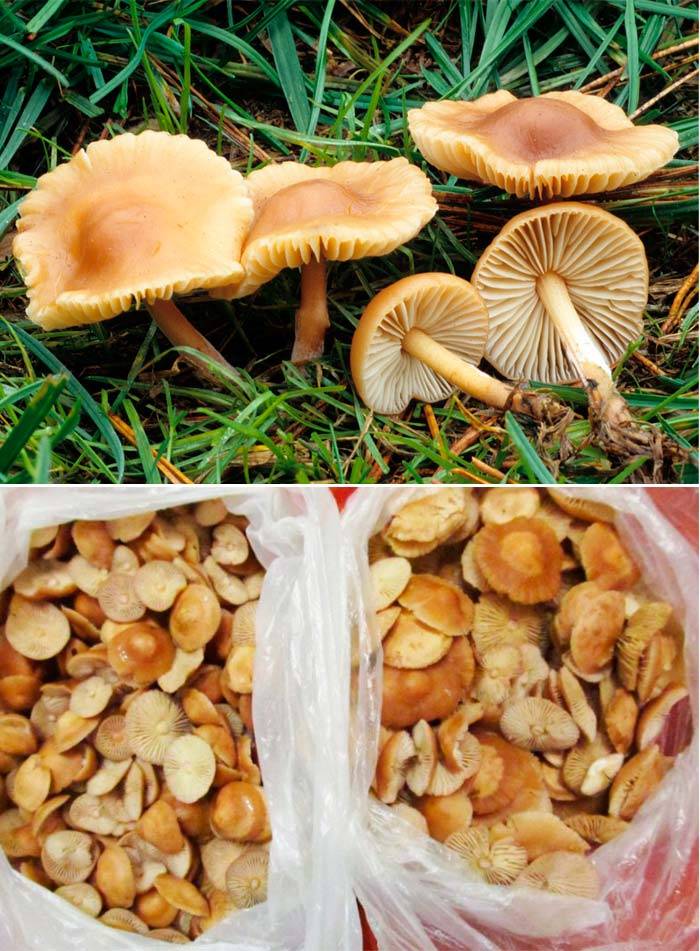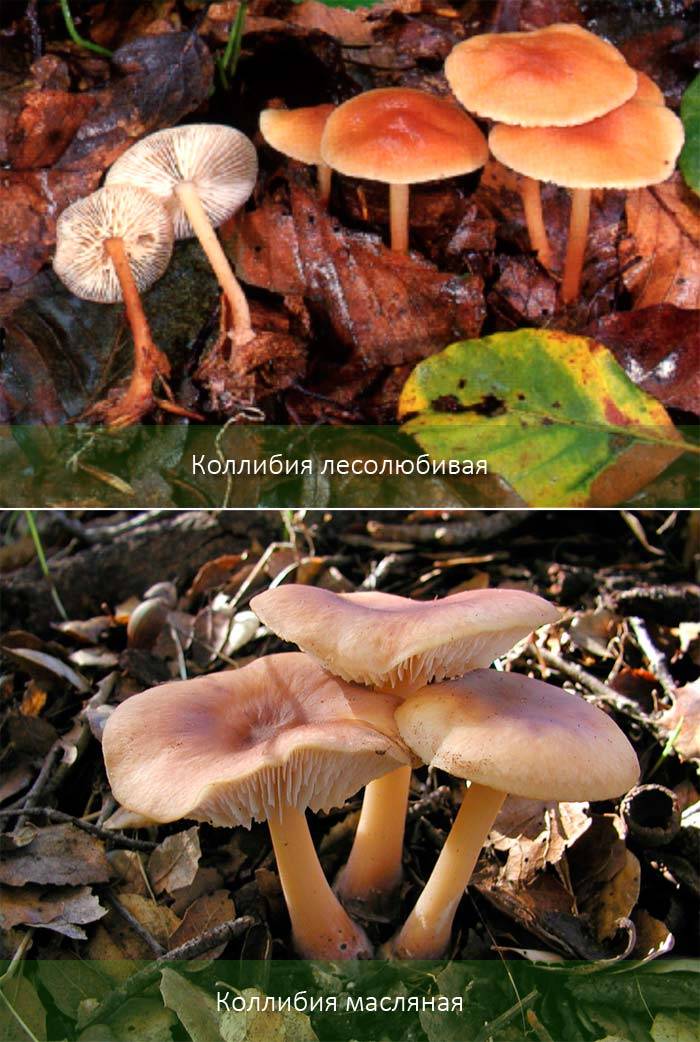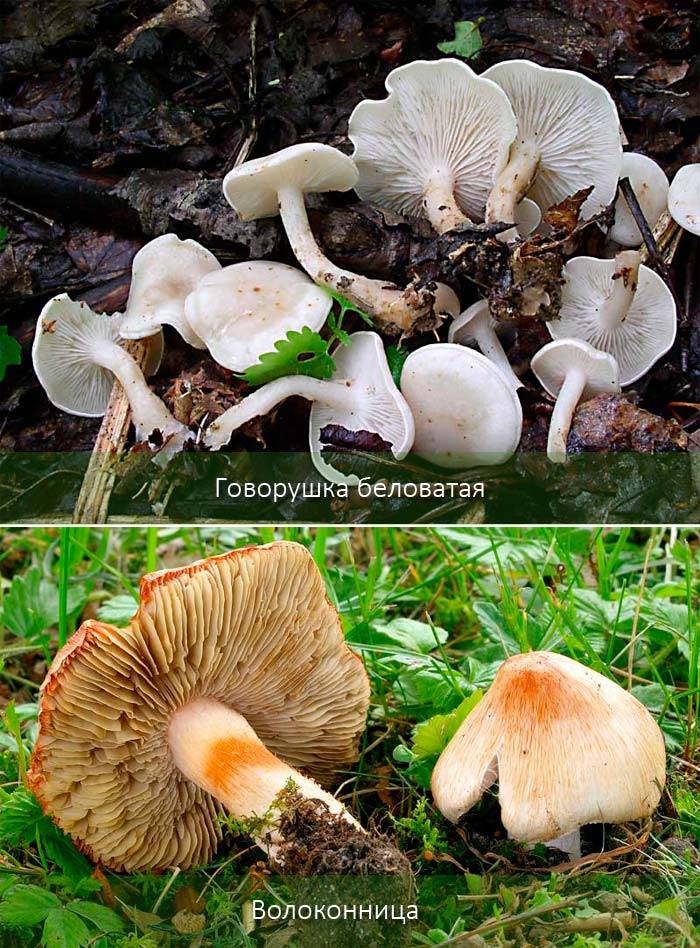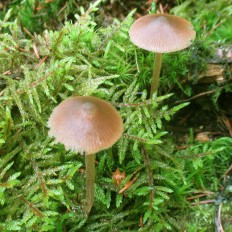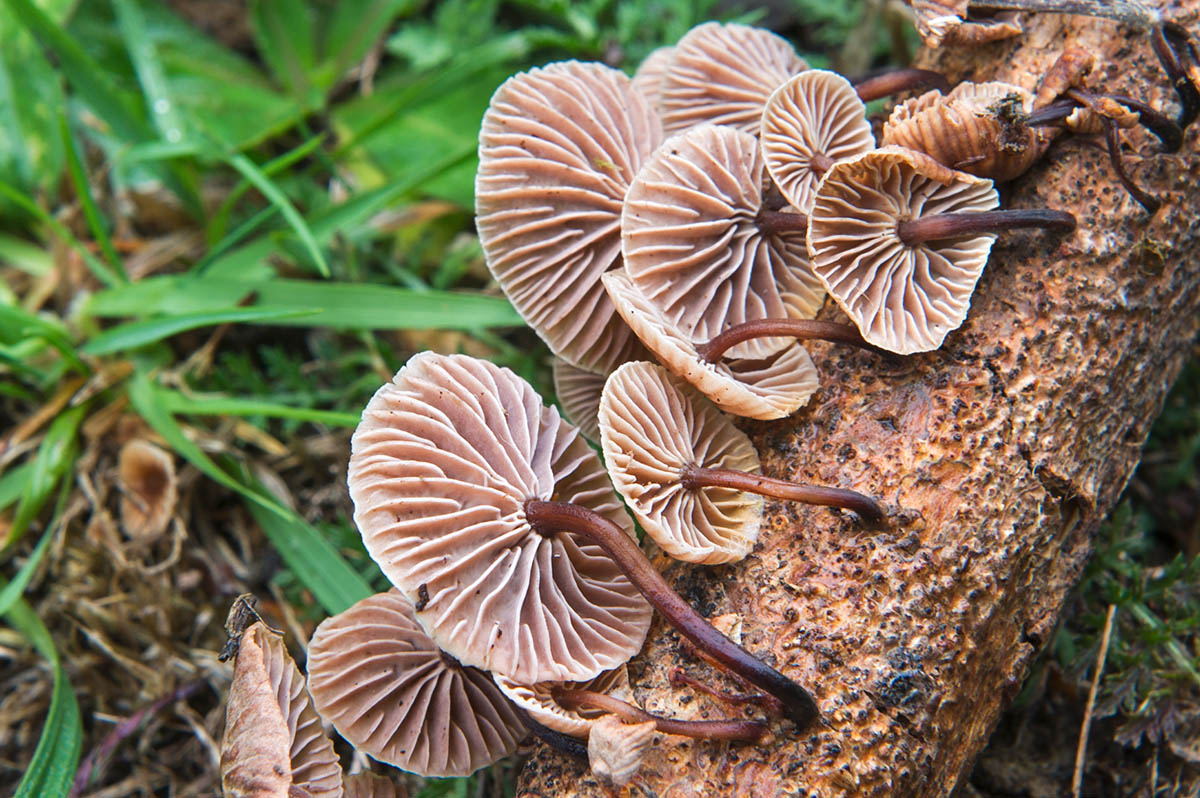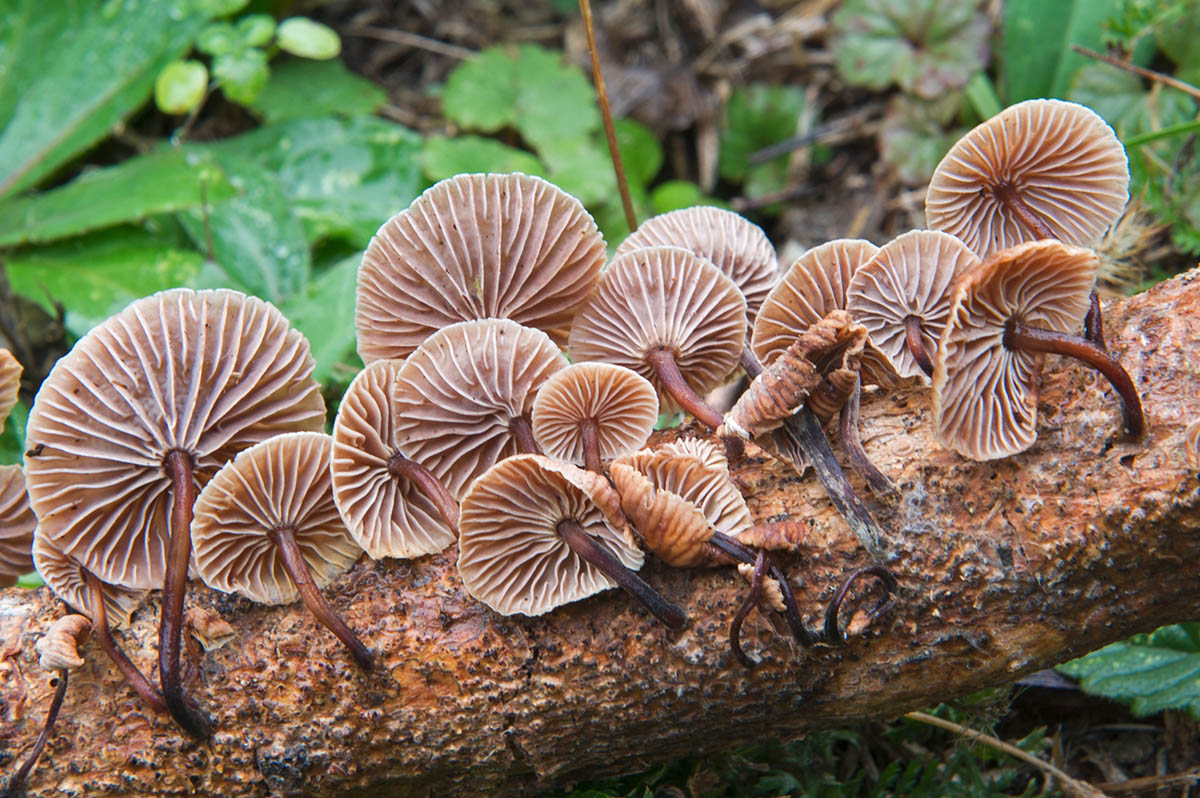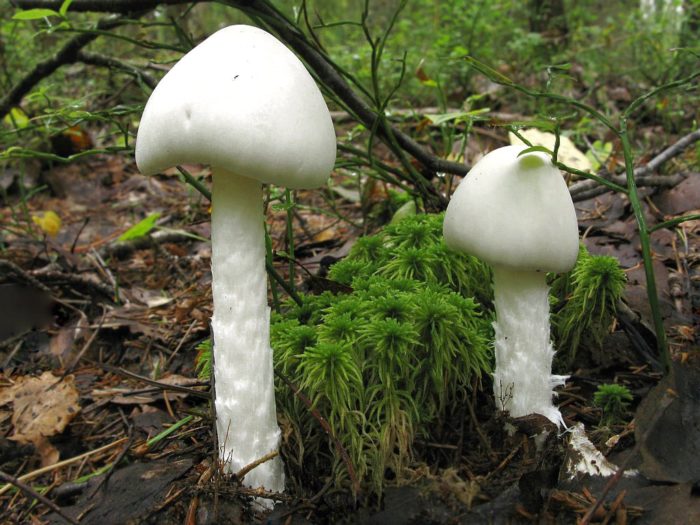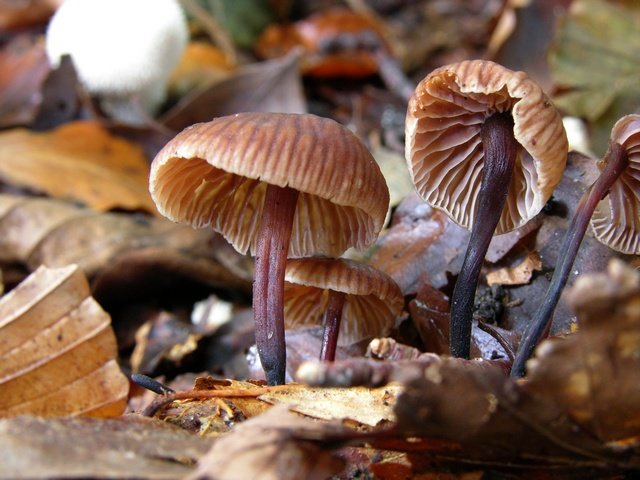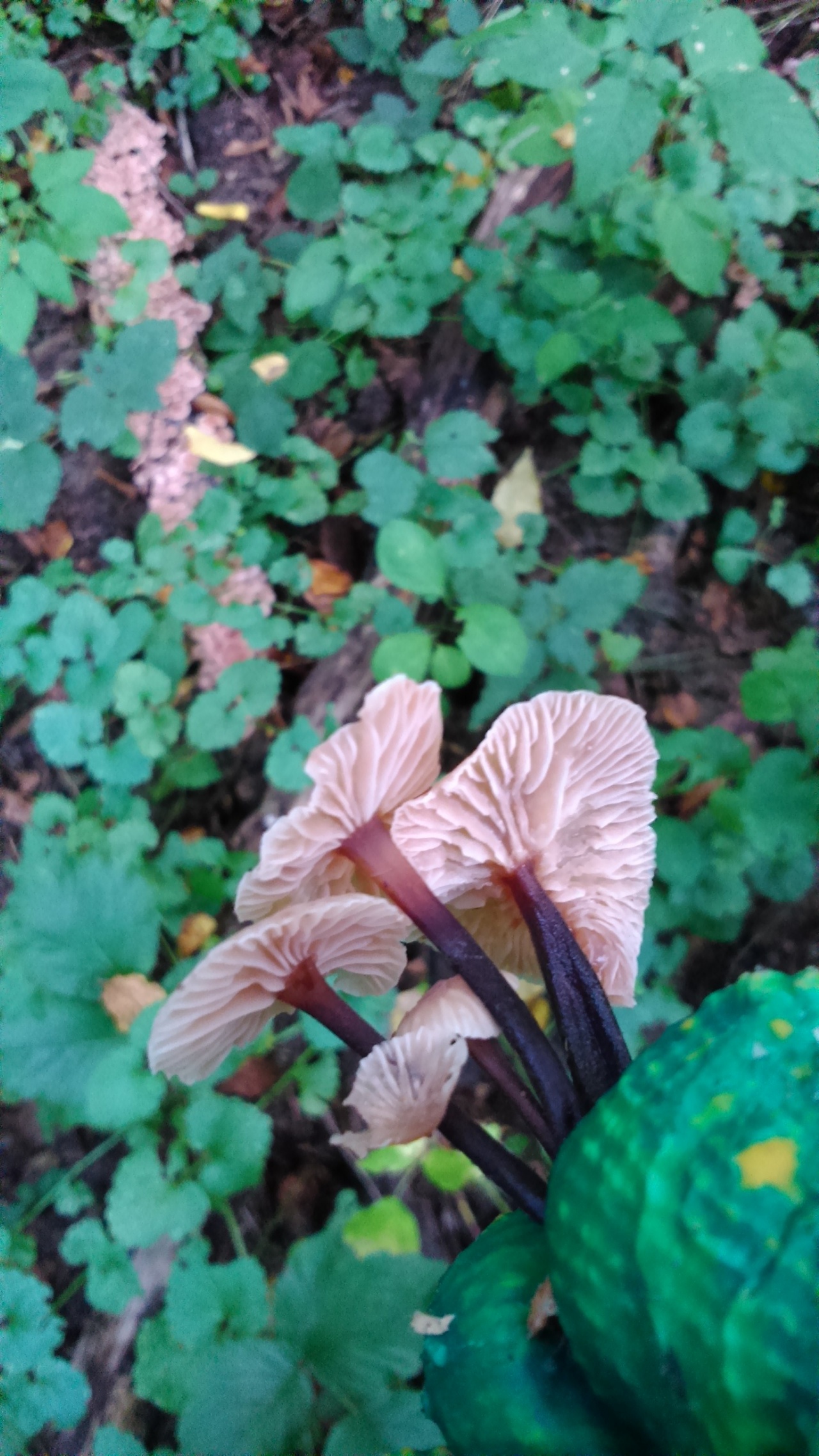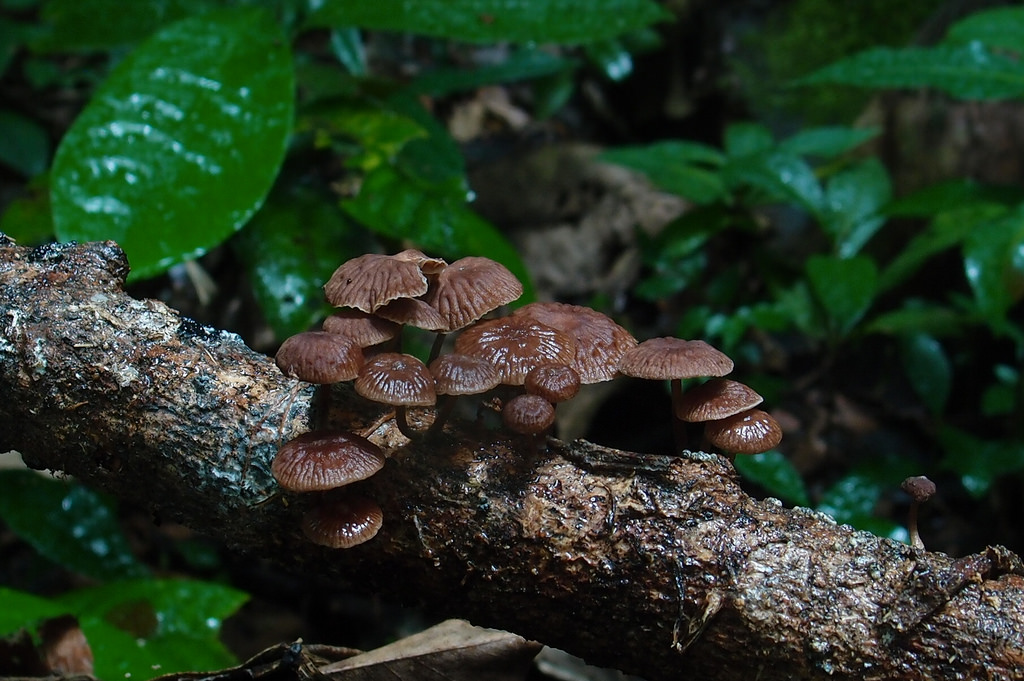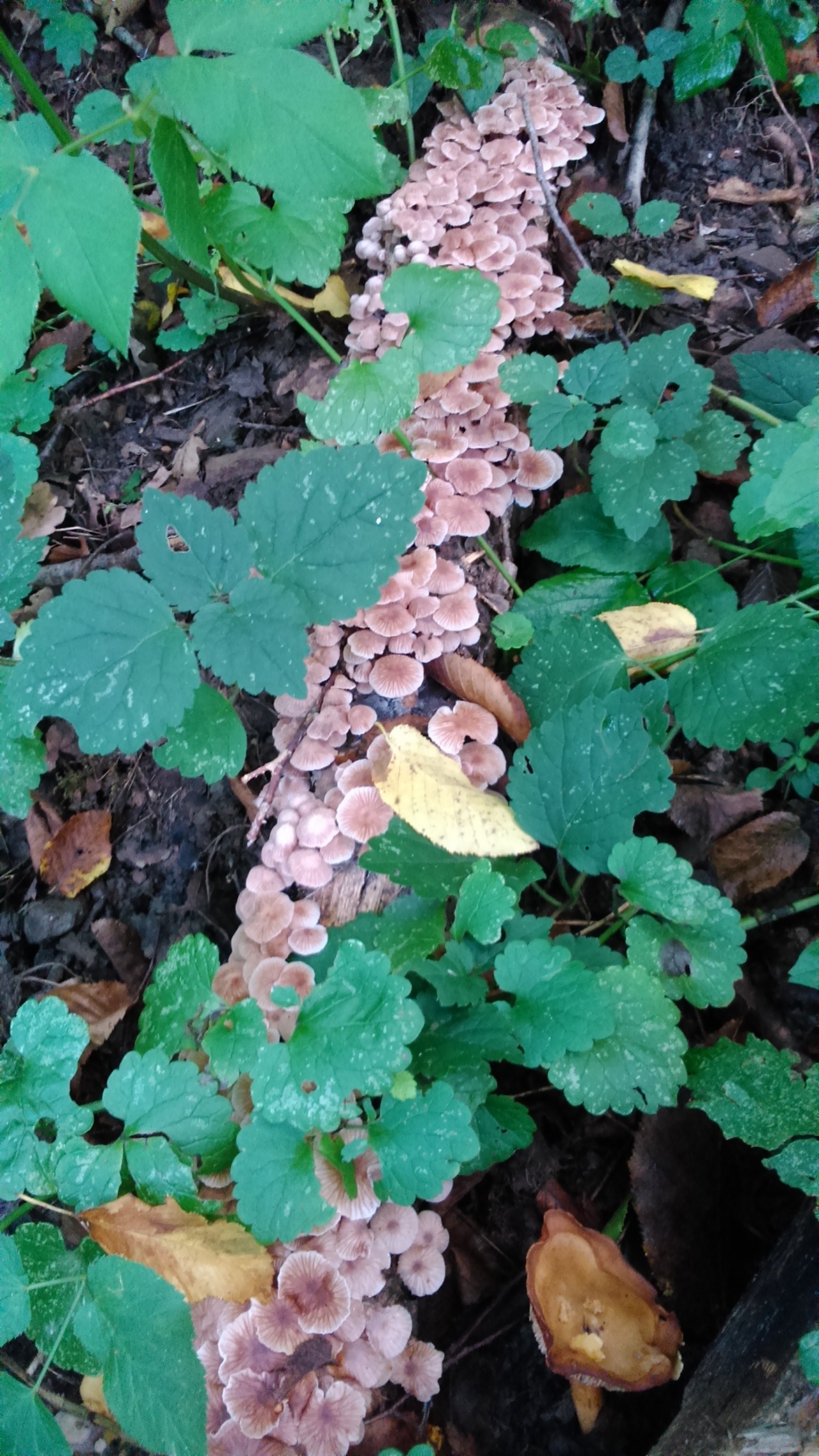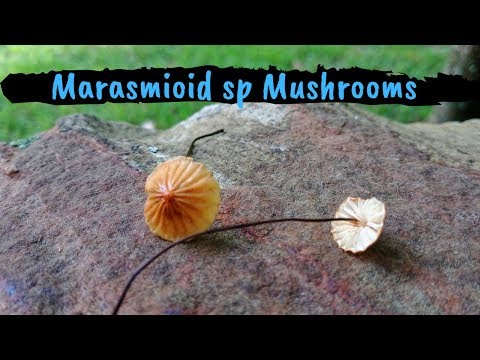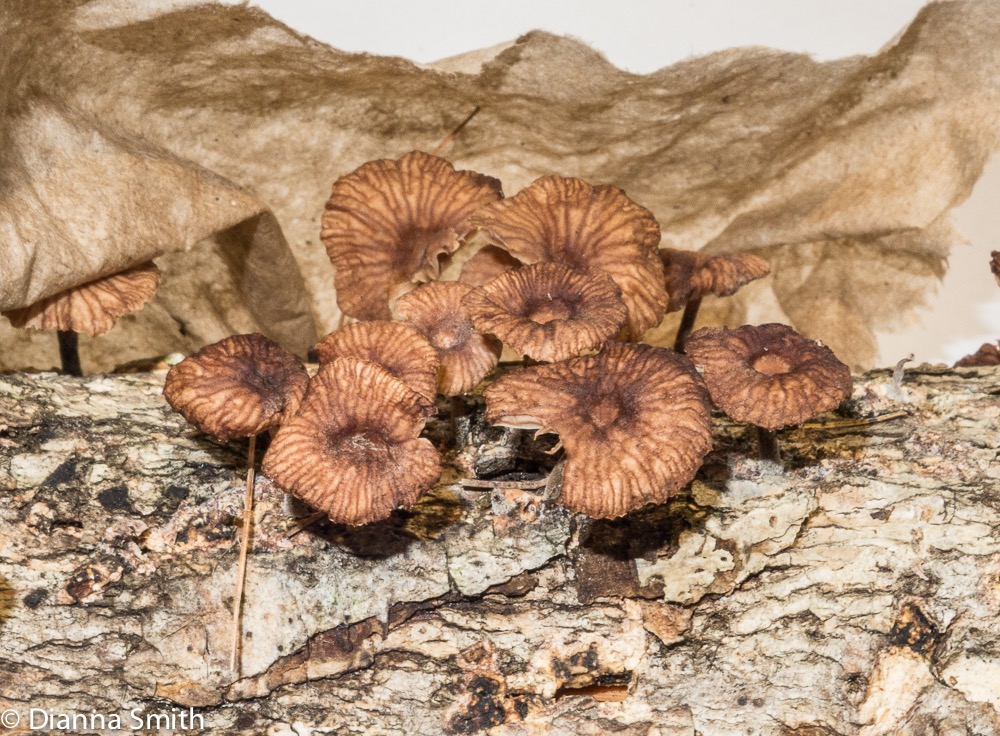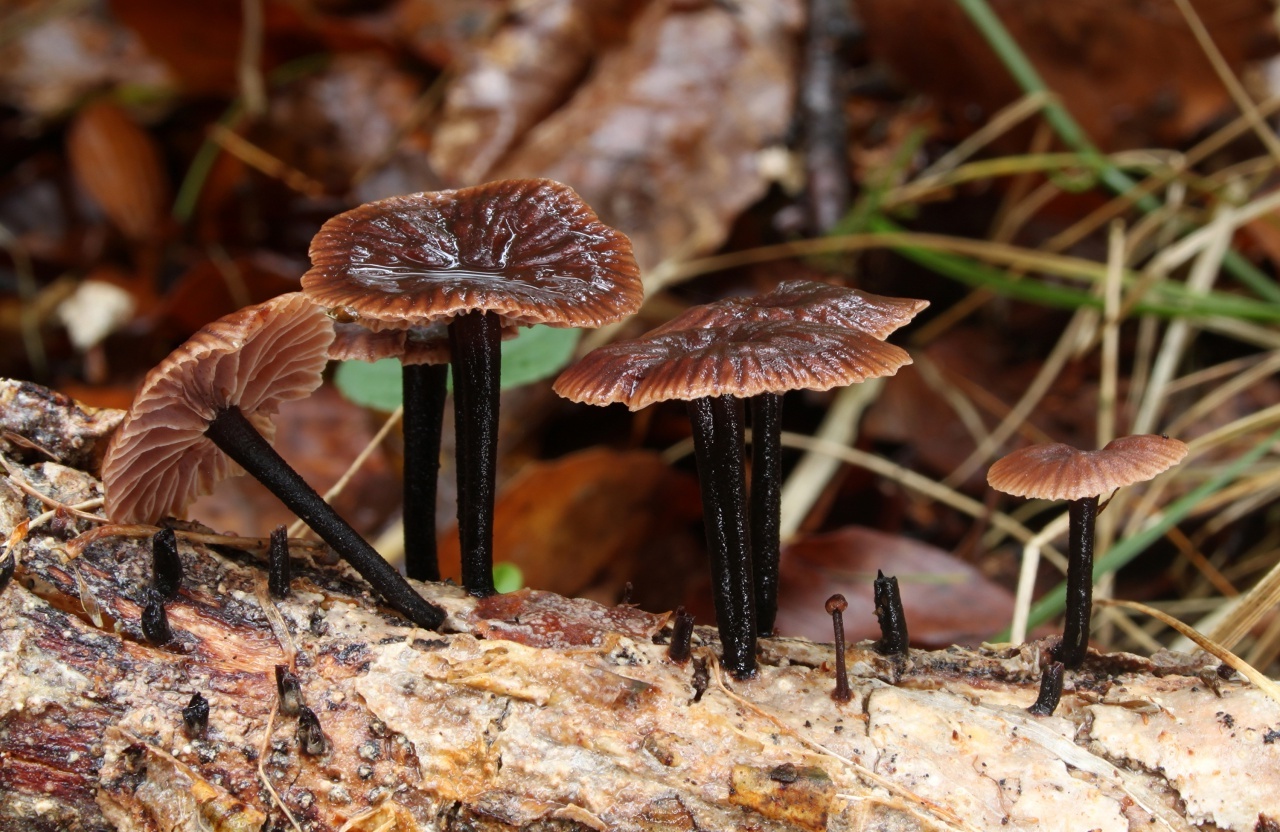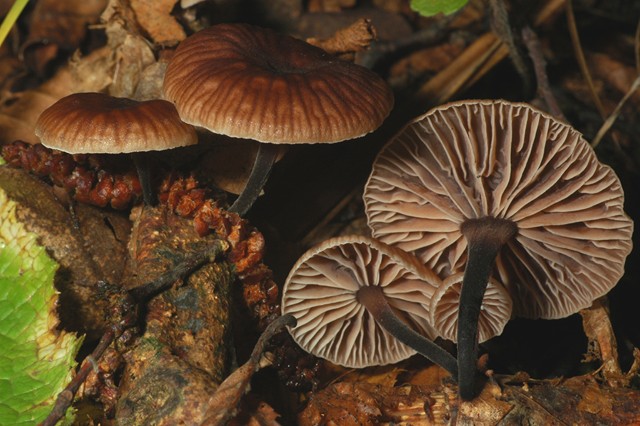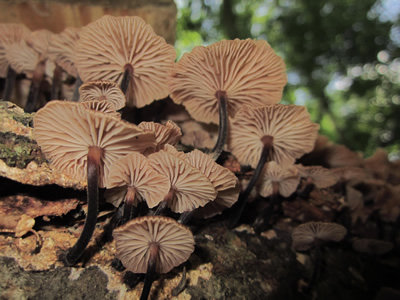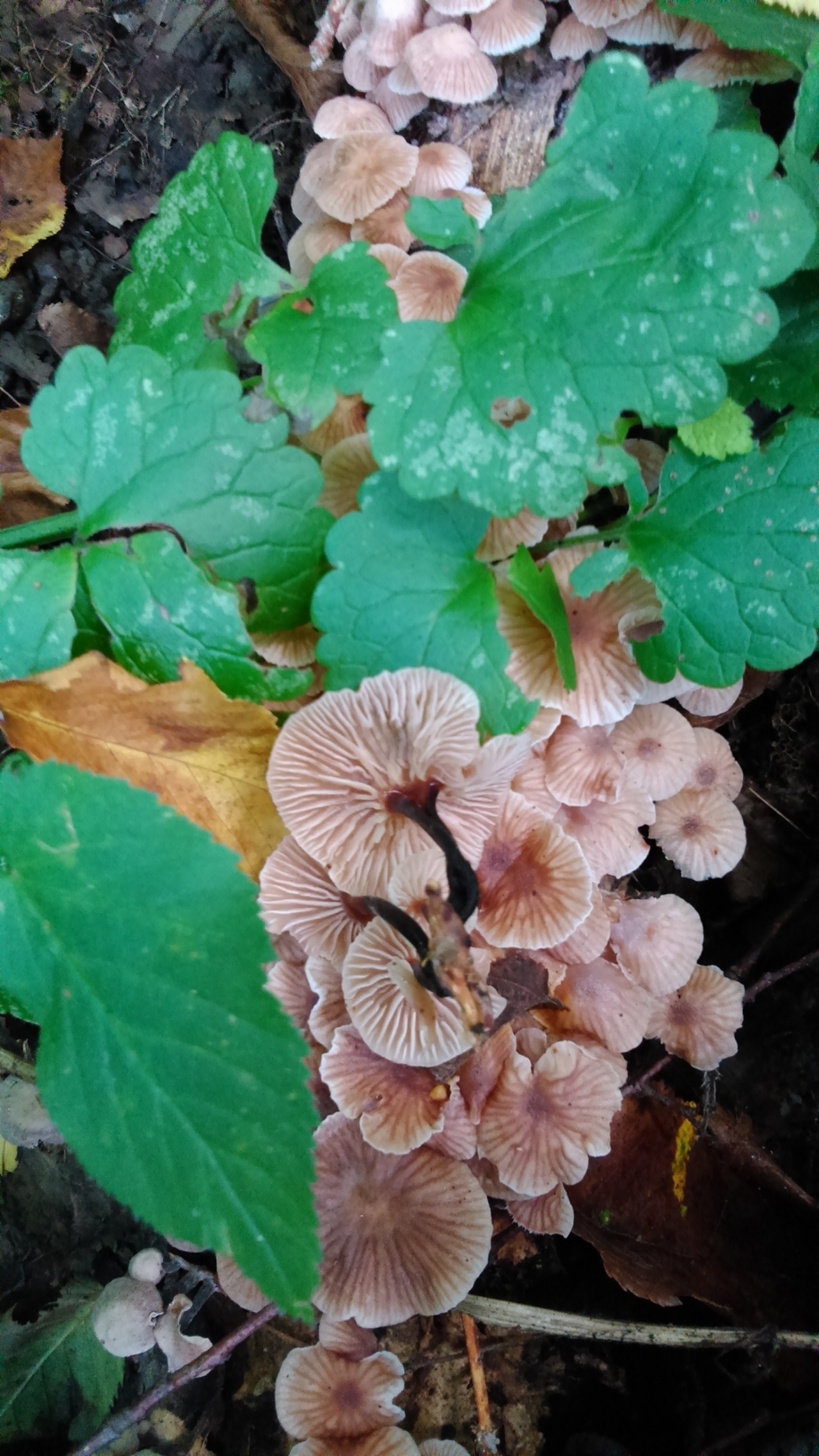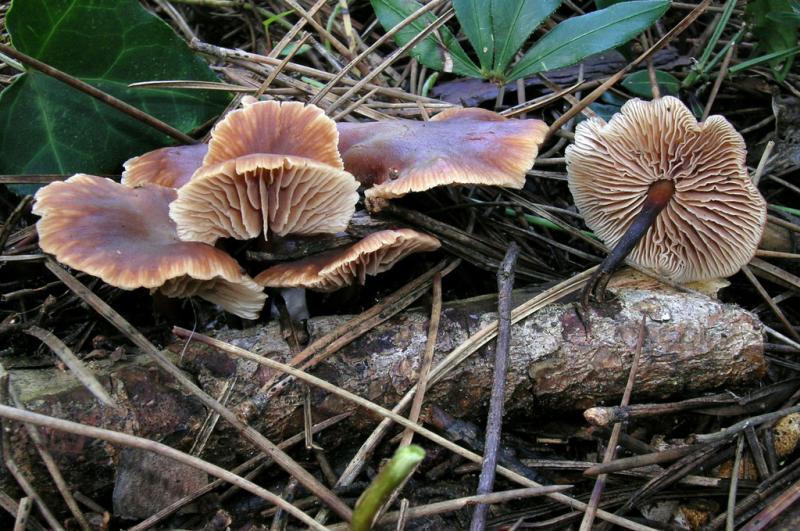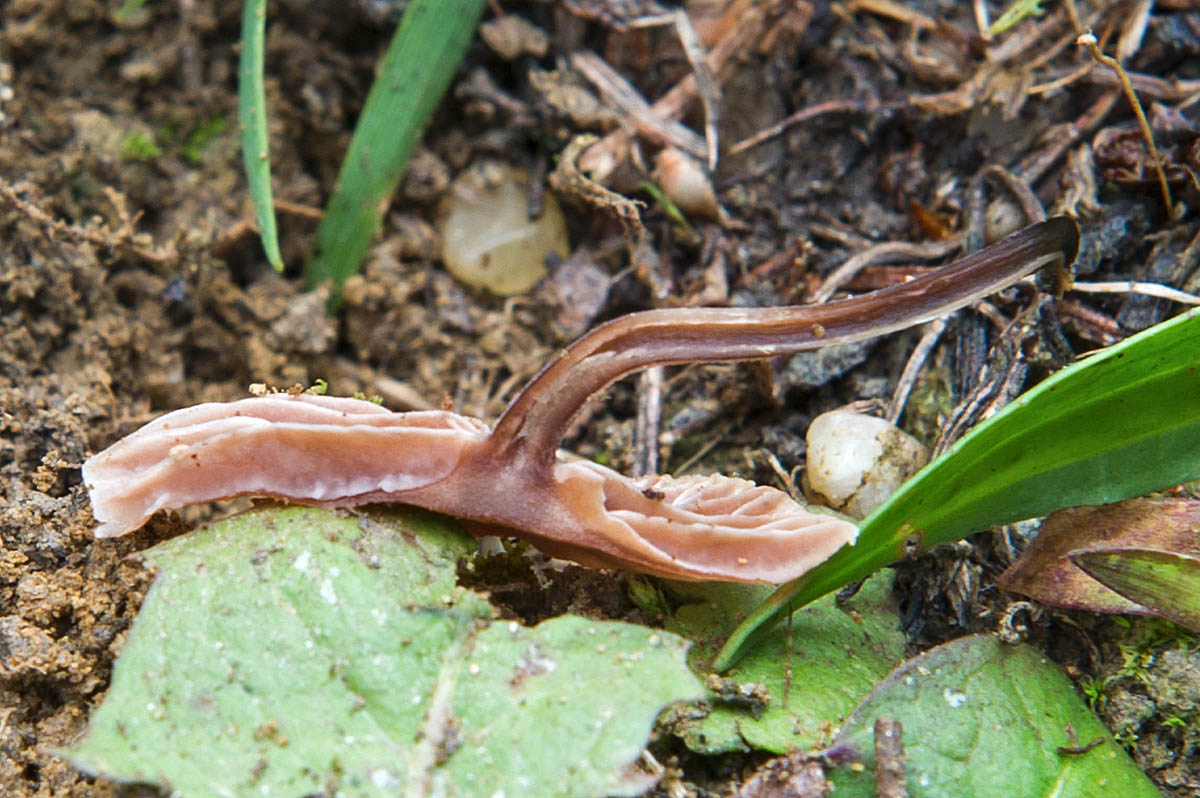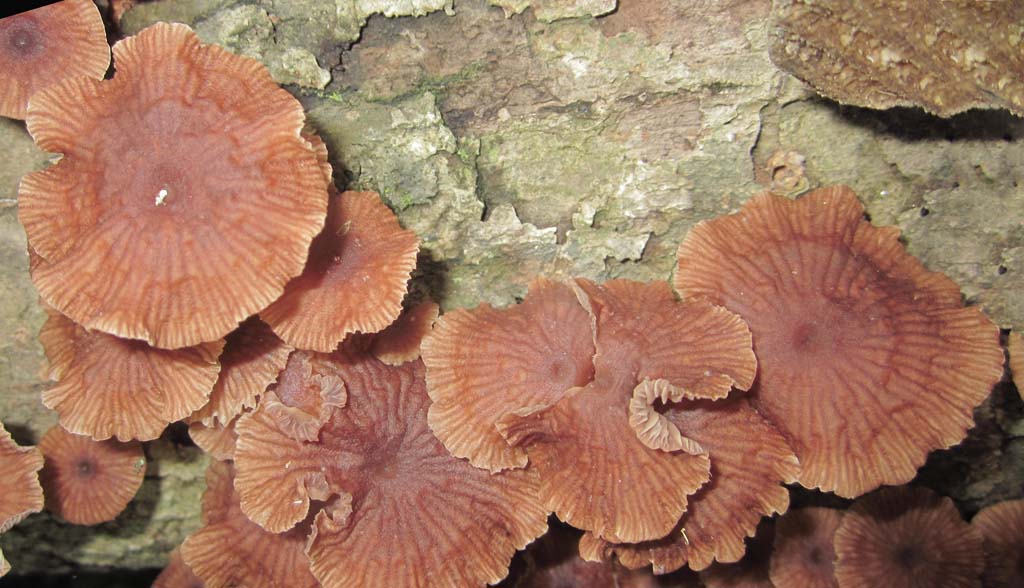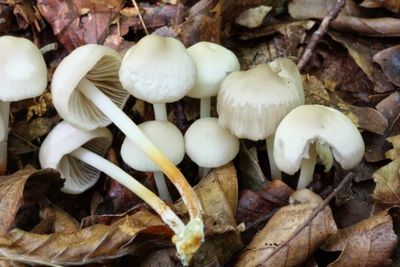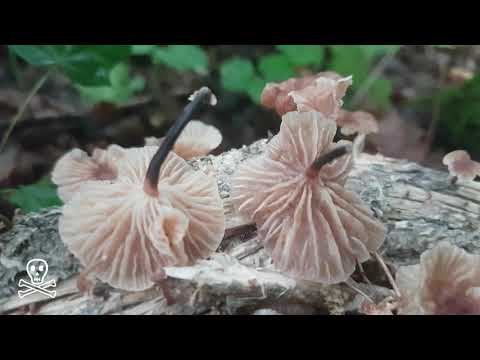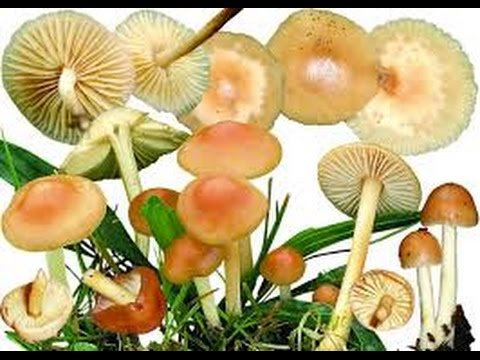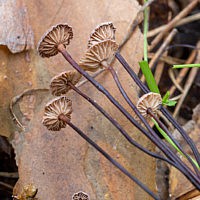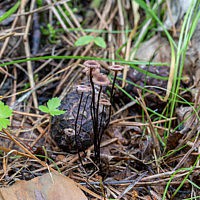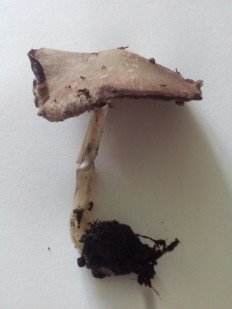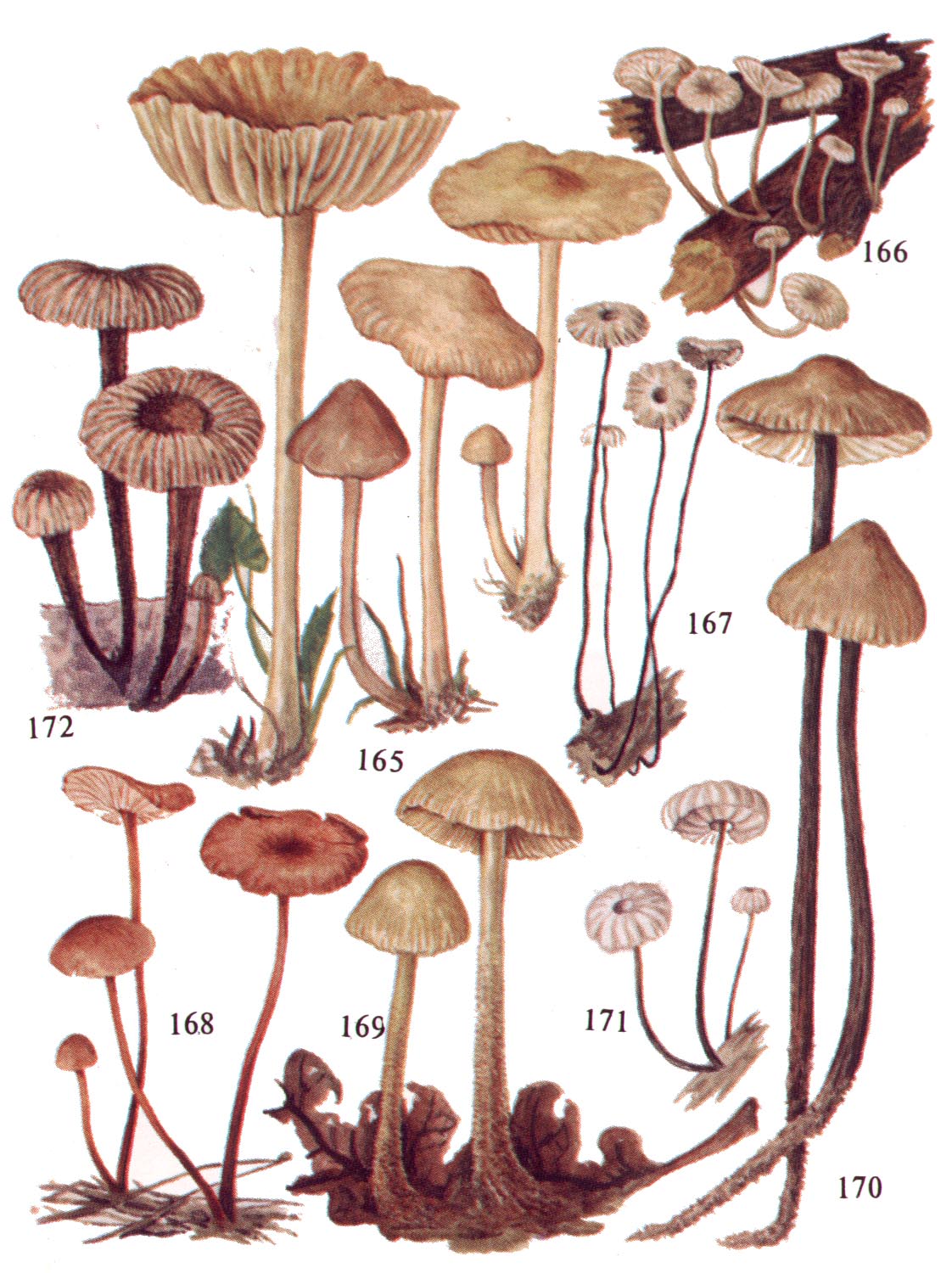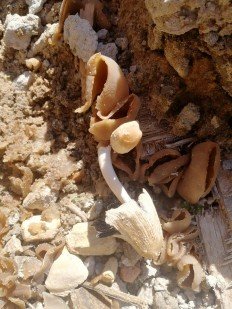Negniichnik dry: photo and description
| Name: | Dry |
| Latin name: | Marasmius siccus |
| Type of: | Inedible |
| Synonyms: | Agaricus siccus, Chamaeceras siccus |
| Systematics: |
|
Dry Negniychnikov is a member of the Negniychnikov family. The Latin name for this species is Marasmius siccus, which also has a number of synonyms: Chamaeceras siccus and Agaricus siccus.
What does a dry non-drip look like?
The mushroom is shaped like an umbrella
The fruit body of the specimen in question consists of a small cap and a long stem. The pulp is very thin, has a slight odor and a bitter taste.
Description of the hat
Always grows in large groups
At the initial stage of ripening, the cap of the dry non-pot is bell-shaped or cushion-shaped; as it grows, it acquires an almost prostrate shape. In its central part, there may be a tubercle or a pronounced flat zone, less often - a small depression. The cap is small in size, it is only 0.5 to 3 cm. It is painted in bright red-brown or orange-brown shades, it fade in old mushrooms. In the central part of the cap, the saturated color lasts longer than along its edges. The surface is smooth, dry and matt with a pronounced radial groove.
On the inner side of the cap, there are rare, almost free, or adhered toothed plates. Painted in light cream or pale yellow tones. Spores are cylindrical or fusiform, smooth, sometimes slightly curved.
Leg description
Grows throughout the summer and in the first half of autumn
For such a small cap, the leg of a dry non-nylon is considered to be rather long, the height of which ranges from 2.5 to 7 cm. Its maximum thickness in diameter reaches about 1.5 mm. It is characterized as central, rigid, straight or slightly curved, even, without bulging. The surface is shiny, smooth to the touch. The upper part of the leg is colored white or light yellow, while the lower part is dominated by dark brown or black shades. At the base there is a white felt mycelium.
Where and how it grows
The optimal time for growing is the period from June to September. Most often, dry non-nipple dwells in deciduous forests on shallow deadwood or leaf litter, less often on needles. Widely distributed in Asia, America and Europe, including Russia, Belarus and Ukraine. This species does not tend to grow one at a time, usually occurs in large groups.
Is the mushroom edible or not
Dry non-fungus belongs to the category of inedible mushrooms. Due to the small size of the fruit bodies, it has no nutritional value and is not suitable for human consumption.
Doubles and their differences
According to its external features, dry non-nipple plant is similar to the following gifts of the forest:
- Blood-headed firebrand. It is an inedible and rare species that has the ability to glow at night. You can recognize the double by a small domed red hat and a rather long stem of dark shades.
- Wheeled nonnichi - this specimen is very similar in shape and size to the described species in the shape and size of the fruiting body. However, the distinguishing feature is the color of the mushroom. So, the hat of the twin in young specimens is painted white, and in mature specimens it is grayish-yellow. Not edible.
- Smelly stinker. It belongs to the group of inedible and poisonous mushrooms. A double can be distinguished by a yellowish-brown cap and a black, shorter stem, the maximum length of which is 3 cm. In addition, this species grows on old hardwood.
Conclusion
Dry firebug is a fairly common species of the Negniychnikov family, which can be found not only in Russia, but also abroad. However, such a specimen is not of interest to mushroom pickers, since it does not represent any nutritional value.
Wheeled reed, Marasmius rotula
Hat: Very small, 0.5 - 1.5 cm in diameter. The shape is from hemispherical in youth to half-spread, with a narrow and deep depression in the central part. The surface is radially wavy, with deep depressions and rises - it may seem that there is no pulp at all, and the surface of the cap is a single whole with rare plates. Color - from pure white in young mushrooms to grayish yellow in older or dry specimens. The pulp is very thin, with a subtle, pungent aroma.
Hymenophore: Very rare, white, adherent to the collar framing the leg - colarium.
Spore powder: White.
Leg: Very thin (no more than 1.5 mm thick), rather long (3-8 cm), dark brown or black, darker in the lower part.
Spreading: The wheely grass grows in damp places on the remains of trees, twigs, and also on deciduous and coniferous litter. Marasmius rotula occurs frequently and in large groups from July to mid-October. Due to natural reasons, it is hardly noticeable.
Similar species: The literature indicates the same “wheel-like”, but not so white Marasmius bulliardii, M. curreyi, etc. as twin mushrooms for Marasmius rotula. Again, due to natural reasons, errors are not only not excluded here, but more than likely.
Edibility: The wheel-shaped insect is so small that it can hardly even contain poison.
Author's notes: In my understanding, non-fungi, garlic and other marasmius are more likely not mushrooms, but details of some kind of “forest mechanism”. Gears, wheels, links are scattered as if at random, but the system works, the system does not give obvious failures. Performs its task, whatever it may be. By the way, there is still some task different from maintaining the system: it is no coincidence that some mushrooms carry a decorative load, while others - pure functionality and nothing more. Even mycenae, even though they cannot be seen without glasses, are presented in color, and sometimes even decorated with some strange antennae. All this is clearly not without reason, and what is the funniest thing is that the simplest and most functional mushroom tells us. This is how the system exposes its own structure to an attentive observer.
“You can't get very far on these wheels. "With age, our thumbnail somehow goes down, dull, and it becomes completely indistinguishable from his many fellow. Apart from the well-known resemblance to a wheel, it is given out by not quite microscopic dimensions and a pronounced collarium at the place of attachment of the plates. Although, of course, the mature Marasmius rotula cannot be called a beautiful mushroom.
Spherical refractory: photo and description
| Name: | Spherical |
| Latin name: | Marasmius wynnei |
| Type of: | Edible |
| Synonyms: | Marasmius wynnei, Chamaeceras wynnei, Chamaeceras wynneae |
| Systematics: |
|
Spherical Negnium is an edible member of the Negnium family. The Latin name for this specimen is Marasmius wynnei.
What does the spherical non-iron pot look like?
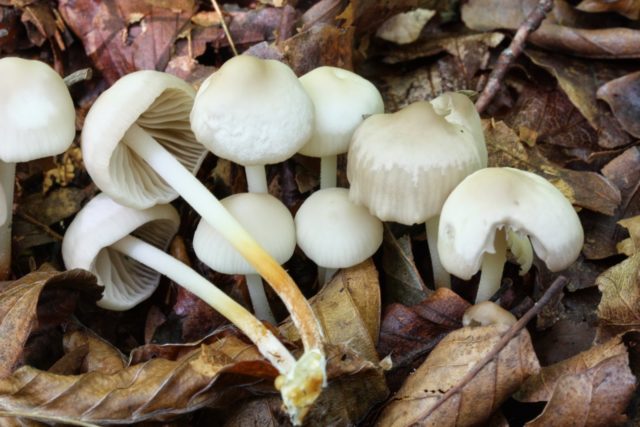
The fruiting body of the spherical nonnium is represented by a small white cap and a thin stem of a dark shade. The spores are ellipsoidal, smooth and colorless.
Description of the hat

In a young mushroom, the cap is convex, with age it becomes prostrate. It differs in a rather small size, which varies from 2 to 4 cm. The surface is smooth and white, with aging it can acquire a gray-purple hue. The edges are uneven, ribbed.On the inside, rare, white and pale gray plates are located high.
Leg description
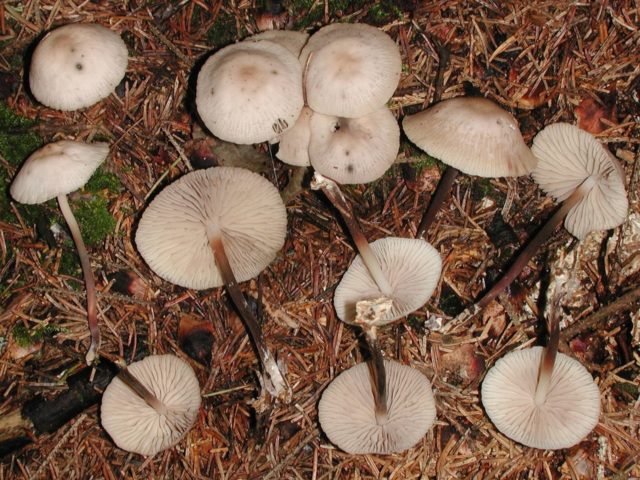
The leg of the spherical non-nylon is rather short, its maximum length reaches about 4 cm, and the thickness is 2 - 2.5 mm. Slightly widened at the top. At the base, the color of the leg is brown, smoothly turning into light, matching the shade of the upper part.
Where and how it grows
The active development of this species falls on the period from July to October. The spherical iris prefers deciduous, mixed and coniferous forests. As a rule, it grows on deciduous litter, less often it grows on conifers.
Is the mushroom edible or not
Belongs to the category of edible mushrooms. It is believed that this specimen is suitable for use in food in any form, however, it is preferable to boil or salt it.
Doubles and their differences
The spherical iris has external similarities with the following varieties of forest gifts:
- Amanita muscaria that is poisonous. At a young age, it is difficult to confuse it, since at the stage of maturation, the cap is hidden by a veil, but with age it opens and acquires similar features with the species in question. One of the main differences from the globular nonnium is the rather large size of the fruiting body. So, the diameter of the cap of the fly agaric is more than twice and is about 10 cm. In addition, even an inexperienced mushroom picker will notice a cup-shaped volva near the base of the leg, which belongs to a poisonous mushroom.
- Common garlic - has a similarly shaped cap, however, a distinctive feature is the frequent arrangement of the plates, as well as a noticeable speck of a darker color located in the center of the cap. In addition, the double has a pronounced smell of garlic, for which it received the corresponding name. Edible.
Conclusion
It is possible to distinguish the globular nonnium from other mushrooms by its short brown stalk, rare plates and a white hat. You can meet him in almost any forest, as well as on lawns and in artisanal thickets. Having seen such a specimen, you should not pass by, since it belongs to the edible gifts of the forest.

